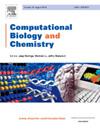基于血液涂片图像混合深度学习的急性淋巴细胞白血病增量学习分类
IF 2.6
4区 生物学
Q2 BIOLOGY
引用次数: 0
摘要
最常见的血癌类型是白血病,它是由骨髓中不成熟的恶性细胞不规则产生引起的。这种危险的情况会削弱免疫系统,使身体容易受到感染,如果不及时治疗,可能会导致死亡。因此,为了控制异常细胞的生长,必须在白血病的初始阶段立即进行治疗。从恶性白血病细胞的血液涂片显微图像中检测白血病是一项耗时且繁琐的任务。因此,我们设计了一个具有增量学习的切线沙猫群优化-长短期记忆- lenet (TSCO-L-LeNet),用于急性淋巴细胞白血病的精确分类。由于使用血液涂片图像减少了诊断时间,提高了诊断准确性,因此该模型提供了更便宜、更快和更安全的诊断服务。在这里,使用自适应中值滤波器对输入图像进行预处理,并使用Scribble2label对图像进行分割。然后对分割后的图像进行增强,并利用特征提取过程从增强后的图像中提取必要的特征。最后,从提取的特征中执行增量学习的L-LeNet对急性淋巴细胞白血病进行分类,其中使用TSCO方法训练L-LeNet的权值。实验结果表明,TSCO-L-LeNet的准确率为0.987,真阴性率(TNR)为0.977,召回率为0.967,假阴性率为0.033,假阳性率为0.023,精密度为0.979。本文章由计算机程序翻译,如有差异,请以英文原文为准。
Incremental learning for acute lymphoblastic leukemia classification based on hybrid deep learning using blood smear image
The prevalent type of blood cancer is called leukemia, which is caused by the irregular production of immature malignant cells in the bone marrow. This dangerous condition weakens the immune system, making the body susceptible to infections, and can lead to death if not treated quickly. Thus, immediate treatments are necessary to detect leukemia at the initial stage to control abnormal cell growth. Leukemia detection from microscopic images of blood smears of malignant leukemia cells is a time-consuming and tedious task. Thus, a Tangent Sand Cat Swarm Optimization-Long Short-Term Memory-LeNet (TSCO-L-LeNet) with incremental learning is designed for the precise classification of acute lymphoblastic leukemia. The proposed model offers cheaper, faster and safer diagnosis service as the use of blood smear images reduces the diagnosis time and improves accuracy. Here, the input image is pre-processed using the adaptive median filter and the Scribble2label is used to segment the image. Later, the augmentation of segmented image is performed and the feature extraction process is employed to extract the necessary features from the augmented image. Finally, the L-LeNet with incremental learning is executed for acute lymphoblastic leukemia classification from the extracted features, where the TSCO approach is used to train the weights of L-LeNet. The experimental results show that TSCO-L-LeNet achieved maximum performance of 0.987 for accuracy, 0.977 for True Negative Rate (TNR), 0.967 for recall, 0.033 for False Negative rate, 0.023 for False Positive rate, and 0.979 for precision.
求助全文
通过发布文献求助,成功后即可免费获取论文全文。
去求助
来源期刊

Computational Biology and Chemistry
生物-计算机:跨学科应用
CiteScore
6.10
自引率
3.20%
发文量
142
审稿时长
24 days
期刊介绍:
Computational Biology and Chemistry publishes original research papers and review articles in all areas of computational life sciences. High quality research contributions with a major computational component in the areas of nucleic acid and protein sequence research, molecular evolution, molecular genetics (functional genomics and proteomics), theory and practice of either biology-specific or chemical-biology-specific modeling, and structural biology of nucleic acids and proteins are particularly welcome. Exceptionally high quality research work in bioinformatics, systems biology, ecology, computational pharmacology, metabolism, biomedical engineering, epidemiology, and statistical genetics will also be considered.
Given their inherent uncertainty, protein modeling and molecular docking studies should be thoroughly validated. In the absence of experimental results for validation, the use of molecular dynamics simulations along with detailed free energy calculations, for example, should be used as complementary techniques to support the major conclusions. Submissions of premature modeling exercises without additional biological insights will not be considered.
Review articles will generally be commissioned by the editors and should not be submitted to the journal without explicit invitation. However prospective authors are welcome to send a brief (one to three pages) synopsis, which will be evaluated by the editors.
 求助内容:
求助内容: 应助结果提醒方式:
应助结果提醒方式:


